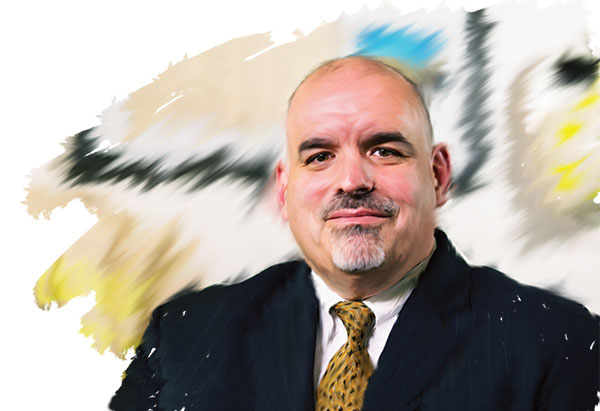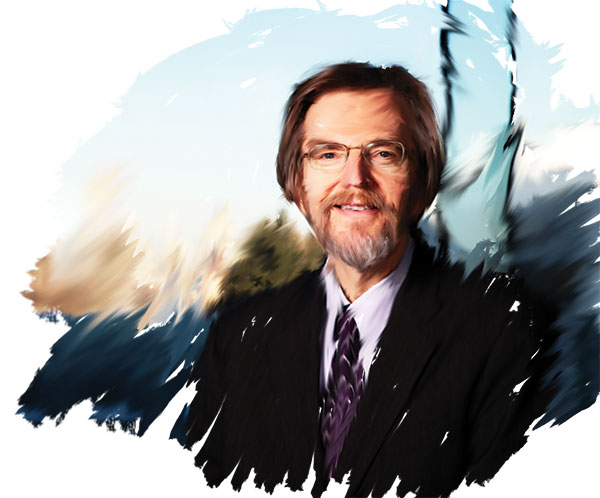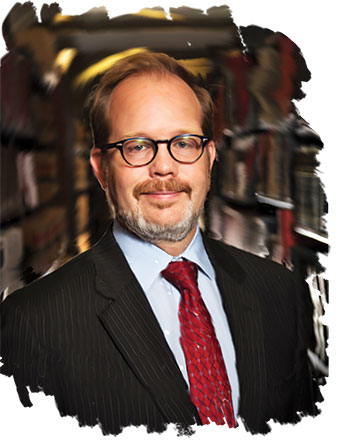Standing Together
Three UAlbany deans joined forces to address the University’s needs – and those of the larger community – during the pandemic.

Even before the coronavirus arrived in the U.S., College of Emergency Preparedness, Homeland Security and Cybersecurity (CEHC) Dean Robert Griffin was following the threat and becoming “concerned about elements of its spread.”
David Holtgrave, dean of UAlbany’s School of Public Health (SPH), had begun to think of the looming pandemic as “a hurricane watch” that would soon make landfall.
School of Education (SOE) Dean Jason Lane was also on high alert, weighing the impacts of a potential lockdown, school closures, and K-12 readiness for remote education. In its 176-year history, observes Lane, SOE and the University at Albany have survived “a civil war, two world wars, the 1918 flu pandemic, and other world-changing events. Such events require a collective community effort and are a time to strengthen our relationships, and also reflect on what is important now and in the future.”

It made sense, therefore, for SOE, SPH, and CEHC to “join in leveraging our expertise and resources to support the community and its people. We have worked together over the last couple of years on various initiatives, so this was a natural opportunity for us to come together to support the University and the broader community,” says Lane.
“Collectively, we bring to the table a highly interdisciplinary set of skills that can help address COVID-19 in a wide variety of ways,” Holtgrave explains. “Truly, this response shows just how strong and unique UAlbany is in terms of confronting public-health and other emergencies in New York State, the U.S., and around the globe. This is a signature area for the University.”
Griffin agrees. “We all stand stronger together. I prioritize partnerships and our working relationships with all the other schools and colleges at UAlbany. CEHC was made for events like the pandemic. Gov. [Andrew] Cuomo wanted a college dedicated to training the next generation of disaster-response leaders. When you add our tremendous data-science and applied-technology efforts, CEHC provides both operational and academic leadership in a growing field that desperately needs both. CEHC has held, and continues to hold, multiple town halls, Q&A opportunities, social-media blasts, and appearances in media as subject matter experts.”
By the time the pandemic hit, CEHC and SPH were already planning a joint degree in emergency management with a public-health concentration.
The college also joined with SPH to conduct weekly town halls, sessions that allowed for “real-time discussions in the challenges facing us all. The special guest speakers from across UAlbany and around the globe were great,” notes Holtgrave. He cites SPH’s founding by David Axelrod, M.D., 35 years ago as “a grand experiment that brought the NYSDOH together with the University at Albany to begin a new model for public-health education and research.
“We were delighted when the department of health asked for partnership on many aspects of the COVID-19 response – from doing research on hydroxychloroquine, to calculating the reproductive rate for the state, to doing analyses on antibody testing serosurvey data, to assisting with the early assessments of possible COVID-19-related inflammatory diseases in children, among many other examples.”
In addition, NYSDOH asked Holtgrave to take a key role – along with other SPH faculty, students, and staff – in assessing the impact of treatments (especially hydroxochloroquine) for patients with COVID-19. [To read the widely cited report, published May 11 in the Journal of the American Medical Association, link to https://jamanetwork.com/journals/jama/fullarticle/2766117.]

To support teachers and parents in navigating the new remote-education environment, SOE faculty and graduate students launched a new online resource hub (www.remoteED.org). SOE also instituted a weekly free webinar series, Community Conversations (archived at http://aatlased.org/community-conversations/). The series, explains Lane, was designed to “bring together educators and leaders from local school districts, other community partners, and SPH and CEHC colleagues to discuss the impact of the pandemic on such areas as educational equity and social justice; support for students with special needs; mental health and mindfulness; and guidance to share learning management between teachers and parents.”
In addition, the Capital District Writing Project, a partnership between SOE faculty and local K-12 teachers, began hosting weekly sessions to “provide a space for teachers to write and reflect with one another as they assessed the effects of the pandemic on their students, classrooms, and schools,” Lane says. The project received the 2020 University President’s Award for Exemplary Public Engagement.
Adds Lane: “The impact of the School of Education’s collective work has been extensive and builds upon our reputation as one of the top 10 providers of online graduate education in the United States. More than 3,000 visitors from 86 countries visited the website as of July 1, and more than 1,300 individuals have participated in our webinars. As a result, we are also seeing the strongest application numbers to graduate programs in years.”
The deans praise their faculty, students, staff, and administrators for making the partnerships possible. “My previous work and friendships with Dean Holtgrave and Dean Lane made our partnership a natural fit,” Griffin says.
The pandemic will change the future in many ways, the deans believe. One of the most pressing issues facing both K-12 education and higher education, Lane says, is the long-term effect of the pandemic on learning. “We all would like education to return to some form of face-to-face instruction, but it’s still not clear what that will look like either for Fall 2020 or Fall 2021. It’s very likely we’ll continue to use some form of remote instruction for the foreseeable future, and that raises important questions from how it will affect student learning to how to structure the school day.”
Holtgrave hopes the crisis “will afford us an opportunity as a society to reimagine what we want the world to be like and to set new priorities. Social justice must factor into the ways we respond to emerging and ongoing health threats. Telling someone to ‘self-quarantine at home’ implies that the individual has a home. Saying, ‘Stock up on supplies for a few weeks’ assumes the person has the resources to do so. Instructing someone to ‘stay home if you are ill’ suggests the individual has paid sick leave. A recent study in San Francisco found that about 90 percent of persons testing positive for COVID-19 antibodies had jobs that prohibited them from working at home.
“Social distancing served to remind us all how much we need each other,” Holtgrave continues. “The more we are separate, the more we need to find ways to come together through videoconferencing, phone calls, and even parades to salute teachers, graduates, health-care workers, and first responders. This crisis has helped us to reflect on what is truly important in this world, and how we can best be there for each other in a truly global family.”
While the pandemic has negatively affected millions of people, particularly the young, who have missed out on graduations, proms, athletics, and other shared educational and social opportunities, “we have found new ways to connect and engage with one another and support our communities,” observes Lane. “I hope that, on the other side of this, we remember our sense of our shared humanity, as well as the vital role that education plays in our societies, now and in the future.”
